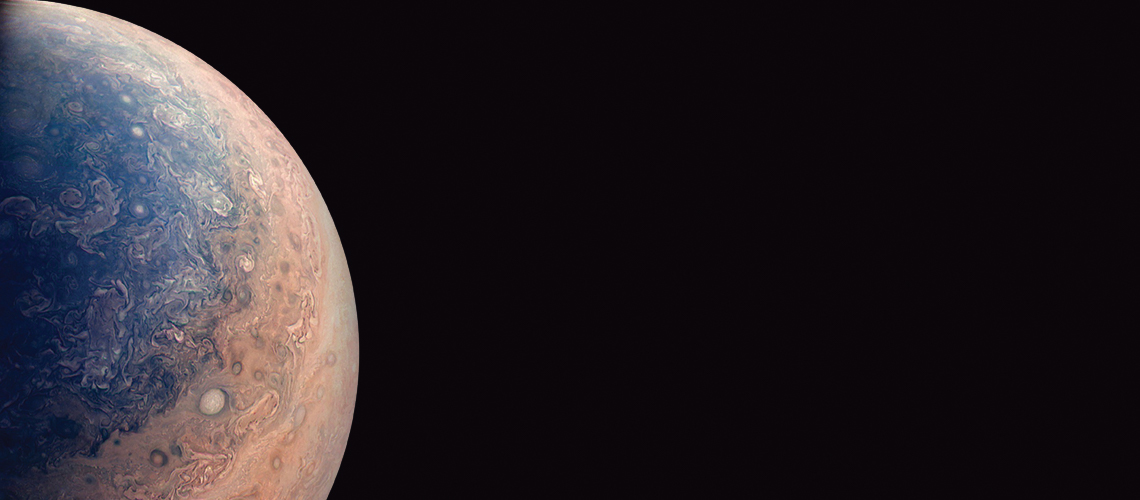
Courtesy of NASA/JPL-Caltech/SwRI/MSSS/Gabriel Fiset
About the Header
NASA’s Juno mission, led by SwRI, is rewriting what scientists thought they knew about Jupiter specifically, and gas giants in general. The Juno spacecraft has been in orbit around Jupiter since July 2016, passing within 3,000 miles of the equatorial cloud tops.
Juno is in a polar orbit around Jupiter, and the majority of each orbit is spent well away from the planet. But once every 53 days, its trajectory approaches Jupiter from above its north pole, where it begins a two-hour transit from pole to pole, flying north to south with its eight science instruments collecting data and its JunoCam public outreach camera capturing astounding images.
The solar-powered spacecraft’s payload is designed to study Jupiter’s interior structure, atmosphere and magnetosphere. Two instruments developed and led by SwRI are working in concert to study Jupiter’s auroras, the greatest light show in the solar system.
